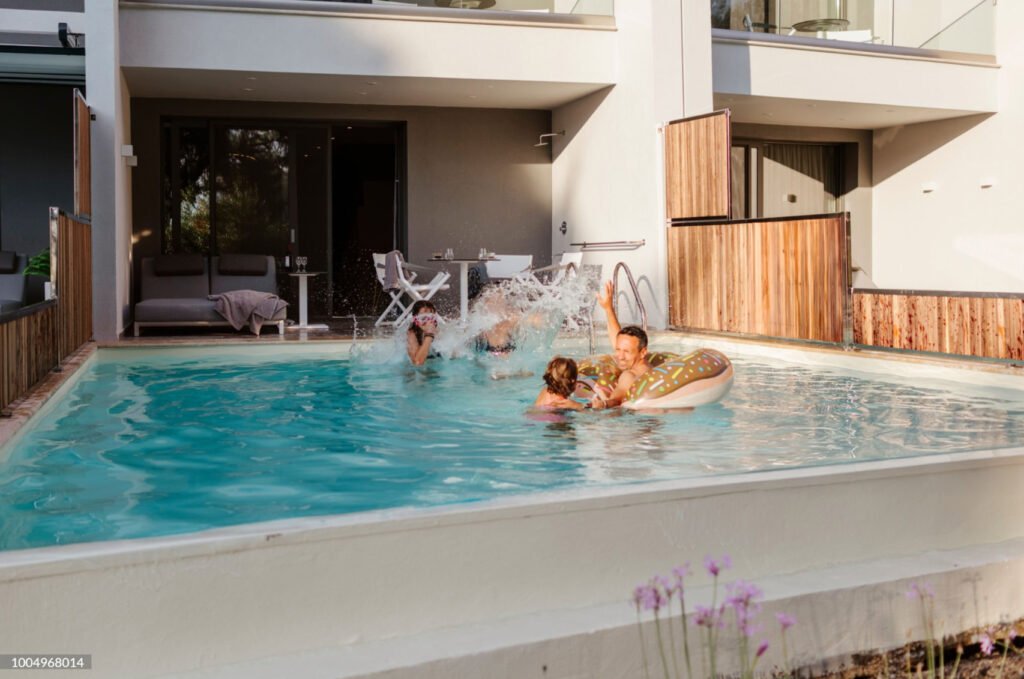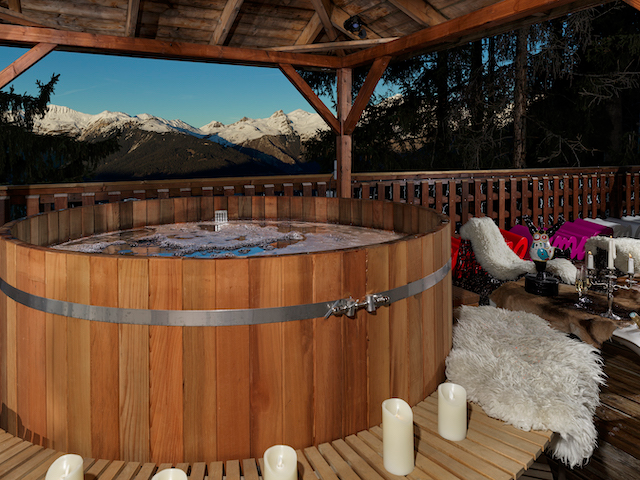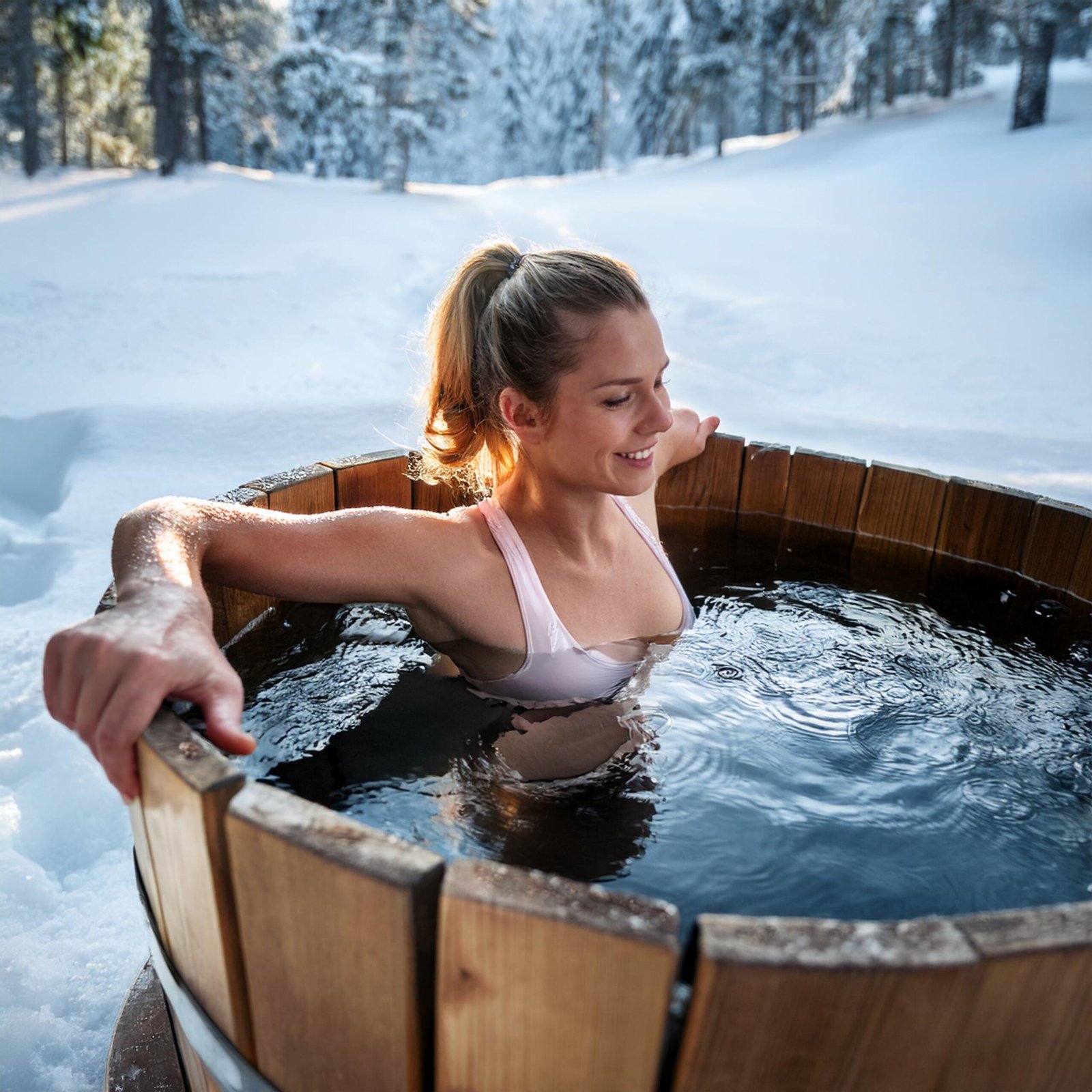Hot Tubs vs Swim Spas: Choosing the Best Option
Lucie
December 10, 2024

Hot tubs and swim spas are both popular leisure and wellness options, offering relaxation and therapeutic benefits. While they share similarities, they serve distinct purposes and appeal to different needs. Understanding the key differences will help you make an informed decision on which option is best for you.
What Is a Hot Tub?
A hot tub, often called a spa or jacuzzi, is a small, stationary vessel filled with warm water, equipped with jets that provide massage and hydrotherapy benefits. Typically designed for relaxation, stress relief, and muscle recovery, hot tubs are a great way to unwind after a long day or an intense workout.
Compact Design: Hot tubs come in various sizes, from two-person models to large, multi-person versions. Their compact design makes them a good fit for smaller spaces.
Hydrotherapy Jets: These jets target muscle tension, improve circulation, and provide soothing massage, enhancing relaxation.
Temperature Control: Hot tubs allow you to adjust the water temperature to your liking, typically between 100°F and 104°F.
Seating Options: Hot tubs often have various seating arrangements, including loungers and bench seats, to accommodate different comfort preferences.
What Is a Swim Spa?
Swim spas are a combination of a swimming pool and a hot tub, offering both relaxation and fitness benefits. They provide a current that allows users to swim in place, making them an excellent option for fitness enthusiasts. Swim spas are designed to provide a continuous swimming experience in a smaller space than a traditional pool.
Swimming Current: Swim spas have adjustable currents, allowing users to swim against a stream of water, providing an effective low-impact workout.
Dual Functionality: A swim spa serves as both a hot tub and a pool. The deep areas are ideal for swimming or aquatic exercises, while the shallow areas are great for relaxation.
Hydrotherapy Jets: Like hot tubs, swim spas include jets for muscle relaxation and stress relief.
Year-Round Use: Swim spas are equipped with powerful heating systems, making them suitable for use in all seasons.

Benefits of Owning a Hot Tub
Stress Relief and Relaxation: Hot tubs are designed to provide a soothing experience. The warm water helps reduce stress by promoting the release of endorphins, which are natural mood enhancers. Soaking in a hot tub can also help lower anxiety and improve sleep quality.
Muscle Recovery: The jets in hot tubs offer therapeutic benefits by improving blood circulation and helping muscles recover after a workout. The warm water alleviates tension, reduces soreness, and can even aid in injury recovery.
Social Interaction: Hot tubs provide an excellent setting for socializing. The comfortable, relaxed environment encourages conversation and bonding among family and friends.
Benefits of Owning a Swim Spa
Fitness and Exercise: One of the biggest advantages of a swim spa is its ability to offer a full-body workout. The adjustable current lets users swim in place, providing a cardiovascular exercise that is low-impact and effective. Swim spas are also ideal for water aerobics and resistance training.
Low-Impact Activity: The buoyancy of the water reduces stress on the joints, making swim spas perfect for individuals with joint pain, arthritis, or those recovering from injuries. The water’s resistance makes workouts more efficient with less strain on the body.
Year-Round Fitness: With heating capabilities, swim spas are usable year-round, allowing you to stay active no matter the weather. This makes them a great investment for those who want to integrate fitness into their daily routine.

Cost Considerations
When deciding between a hot tub and a swim spa, the cost is an important factor. Swim spas are generally more expensive due to their larger size and multifunctional design.
Hot Tub Cost Range:
Initial Purchase: $3,000 – $15,000
Installation: $1,000 – $3,000
Swim Spa Cost Range:
Initial Purchase: $10,000 – $30,000
Installation: $3,000 – $10,000
Maintenance Costs:
Hot Tubs: Monthly costs typically range from $30 to $50 for chemicals, water, and electricity.
Swim Spas: Swim spas may cost between $50 and $100 monthly, given their larger water volume and heating systems.
Space and Installation Requirements
Hot Tub: Hot tubs typically require less space than swim spas. However, they still need a solid foundation, such as a concrete pad or reinforced deck. Electrical installation may require a licensed electrician to set up a 240-volt circuit.
Swim Spa: Swim spas require a larger space due to their dual functionality. They need a stable foundation and access to a robust electrical supply. Installation may be more complex and involve additional site preparation.
Choosing the Right Option for You
When deciding whether to invest in a hot tub or a swim spa, consider the following factors:
1. Your Primary Goal: If relaxation and stress relief are your priorities, a hot tub may be the better choice. However, if you’re focused on fitness and aquatic exercise, a swim spa would be a better fit.
2. Budget: Hot tubs are typically less expensive upfront, but swim spas offer more versatility. Consider the long-term maintenance and operational costs of each option when making your decision.
3. Space Availability: Hot tubs require less space, so they’re a better option for smaller areas. If you have the space for a larger installation, a swim spa can provide both fitness and relaxation benefits.
4. Lifestyle: Consider your lifestyle and whether you prioritize relaxation, fitness, or a combination of both. Hot tubs are excellent for unwinding, while swim spas offer a dual-purpose solution for exercise and relaxation. Link to Department of Energy



